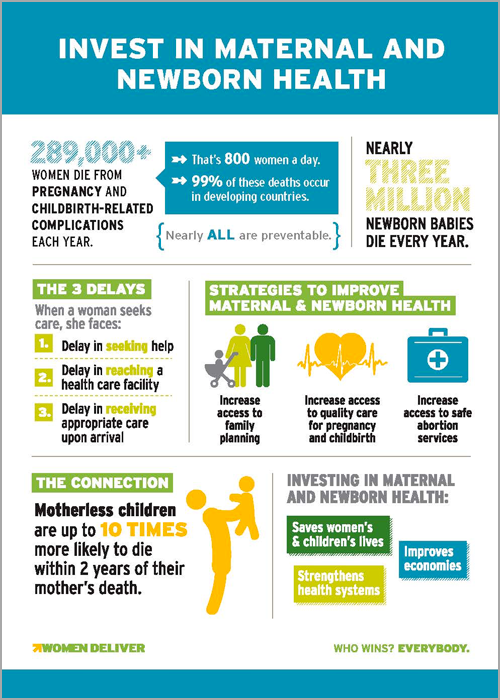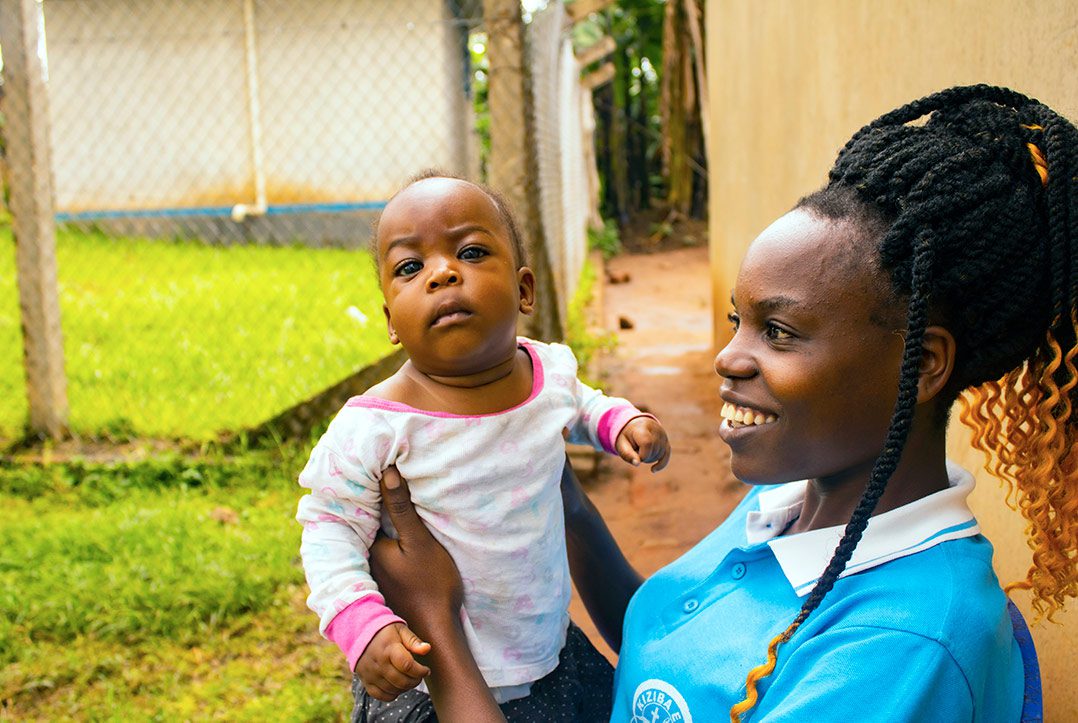
Maternal health is vital in shaping reproductive health outcomes in the mother and babies alike, this helps in a better health and developed society.
Maternity Care education is a multidimensional issue that encompasses physical, mental, and social-economic well-being. Education plays a vital role in improving maternal health outcomes by:

Educated women are more likely to look for appropriate healthcare services at the right times. Pregnancy care services are used more frequently by women who have completed reading and writing instruction, according to statistics. In order to improve maternal outcomes, educational programs assist women access the resources they need, navigate healthcare institutions, and fight for their healthcare rights.
3. Promoting Healthy Behaviors:
4. Reducing Social-Economic Barriers:Social and economic gap often worsens most prenatal health complications. Better education empowers people to escape poverty because it allows them to find improved employment as well as generate higher incomes. Better social-economic status enables women to access high-quality healthcare services as well as decrease waiting times for medical care. reproductive health services access diminishes the probability of health crises affecting pregnant women.
Maternity care is transformed by education in the following significant ways:
1. Improved Knowledge Results in Better Health Behaviours
Knowledge acquired through education enables women to grasp how their bodies transform during pregnancy and which measures will keep them in health.
Educational workshops on maternal nutrition teach expecting mothers about eating food combinations that contain important vitamins and minerals.
The essential information prevents both anemia and gestational diabetes from developing during pregnancy. Female education concerning dangerous risks from early marriage and childbirth drives women to postpone pregnancy until they reach physical and emotional preparedness.
The extended delay to postpone pregnancy decreases the risks of teenage birth and enables women to obtain better educational qualifications along with professional advancement opportunities. Education investments lead to better reproductive health services results thus displaying why maternity care improvement requires educational funding.
Higher educational attainment among women produces substantial increase in their pursuit of preventive medical services that include prenatal care and immunizations. When mothers graduate from school they gain knowledge about early disease identification as well as treatment approaches to health concerns.
The Centers for Disease Control and Prevention stresses that routine prenatal appointments help track maternal-infant health which reduces delivery complications.
Rural areas receive effective maternal healthcare intervention through education-based programs which lead to increased service use. Community outreach programs which incorporate educational workshops create conditions that allow women in local communities to control their health preventing delays in care. The mom and neonate experience better results because nurses maintain a forward-thinking position.
3. Reducing stigma and reforming attitudes
The educational process works as a transformative power to modify community opinions regarding maternal health. Traditional cultural beliefs together with pregnancy and childbirth stigma prevent numerous women from receiving healthcare services.
Educational programs that share evidence-based information contribute to the elimination of harmful reproductive health myths by developing positive community behaviour patterns.Colleges operated by non-governmental organisations (NGOs) successfully diminished prejudices linked to maternal medical care through community-based educational projects.
Such training uses local community representatives to promote maternal healthcare awareness which modifies public understanding while building inclusive social environments. The decline of stigma allows women to access necessary medical care which ultimately enhances their health results.
Improving antenatal health care is largely dependent on economic empowerment. Education gives women the information and abilities they need to land better jobs, which improves their financial security. Women who earn more money can spend it on high-quality medical care and lead healthier lives. Long-term gains in maternal health outcomes depend on this economic empowerment.
Reproductive services education, for instance, is one of the best indicators of a child’s health and survival, according to a UNICEF study. Pregnant women who have finished secondary school are more likely to give birth to babies who are healthier. This association emphasises how crucial it is to fund girls’ education in order to enhance maternal health and end the poverty cycle.
It takes a multifaceted strategy to fully utilise education’s potential to improve Reproductive Health services Here are a few successful tactics:
1. Include instruction materials on maternal health in school curricula
Reproductive health, nutrition, and safe delivery techniques are all subjects that educational institutions should include in their curricula on antenatal care. This guarantees that young ladies are given correct information from a young age.
Funding initiatives for teacher training can improve the way maternal health education is delivered. Students’ attitudes and behaviours can be greatly influenced by teachers who possess current information and employ effective teaching techniques.
2. Community-Based Education Programs
Holding periodic community workshops together with educational seminars should address Prenatal services matters. Medical professionals along with educational experts lead such forums which offer practical knowledge about maternity healthcare.
Utilize local community leaders together with NGOs for expanding reproductive health education programs throughout the community area. Such community partnerships help spread educational information among underserved demographics while building an organized support platform for women.
They are effective ways to reach a wider audience with instructional information through digital media. Regardless of a woman’s physical location, remote educational initiatives such as video conferences and virtual discussion boards provide pertinent healthcare information regarding maternity health. Check out the educational resources on StudyCreek, which offer cutting-edge digital learning strategies.
To raise awareness of reproductive health and education requirements, the organisation must launch social media awareness campaigns. Social media campaigns that use captivating content, topical hashtags, and real feedback help spread the word and inspire community members to get involved.
Mobile Health Clinics:
Deploy mobile health clinics in rural and remote areas to provide direct access to maternity health services and education. These clinics can offer screenings, vaccinations, and prenatal care, combined with educational sessions.
Health Insurance and Subsidies:
Encourage policies that provide affordable health insurance and financial support for maternal health services. Government initiatives and partnerships with private organizations can make quality healthcare accessible to all women.
Data-Driven Policies:
Use research and data to inform public policy. Studies that highlight the positive correlation between education and reproductive health outcomes can drive legislative changes that support comprehensive health programs.
Advocacy Campaigns:
Mobilize communities to advocate for policies that prioritize maternal health. Training citizens in advocacy skills can empower them to influence policymakers and secure funding for reproductive health initiatives.
The transformative impact of education on maternity health is well-documented across various regions. Here are a few real-world examples:
Case Study 1: India’s Rural Health Initiative
Mothers’ health education was included into community-based initiatives in India through a rural health project. When female patients got education on safe birth techniques, nutrition, and prenatal care, the rates of maternal and newborn mortality significantly dropped. Through this program, which was supported by government funding and local NGOs, education acts as a transforming factor in maternal health outcomes.For further insights, see the World Health Organization’s maternal health resources.
Case Study 2: Sub-Saharan Africa’s Digital Education
Digital learning platforms have been used to teach women about mothers health in Sub-Saharan Africa. Women now have access to critical health information through interactive webinars and mobile applications, which has improved prenatal care and decreased delivery difficulties. This project serves as an example of how utilising technology may improve maternity health education and get over geographic restrictions.
Case Study 3: Education and Economic Empowerment in Latin America
Through educational initiatives that raised the educational achievement of girls, some Latin American nations saw improvements in reproductive health outcomes. People who attain higher levels of knowledge are more likely to adopt healthier habits, which reduces mothers mortality and raises child survival rates. Since education is a tool to help communities while improving maternal healthcare, the positive data shows that financing for education must be maintained.

Widespread positive changes occur when mothers maintain optimal health status. Motherly health creates benefits that start with excellent childcare for children which leads to thriving communities and increased economic productivity. Here are some broader impacts:
Intergenerational Benefits:
When mothers are healthy they provide better support to their children which results in better social and educational achievements for their children who become the next generation.
Economic Growth:
Medical programs for maternal health result in both decreases in healthcare expenses and higher levels of women workforce involvement. The economy achieves long-lasting economic expansion when mothers receive education and maintenance of good health since they can create greater value through their work.
Social Stability:
The health enhancement of mothers results in less disruption for their communities. Well-being in families leads to societal strength since it creates social unity and minimizes unequal social conditions.
Enhanced Quality of Life:
Better mothers health advances to result in superior life quality. The empowerment of women grows when they lead healthful lives and receive education since both conditions pave the way for stress-free and better mental health benefits within their communities.
There are still issues in spite of the tremendous advancements in reproductive health h education. In many places, growth is still hampered by socioeconomic inequality, cultural hurdles, and limited access to high-quality education. Governments, NGOs, and communities must work together to overcome these obstacles.
Upcoming projects ought to concentrate on:
Making certain that all women, irrespective of their financial situation, have access to high-quality education covering reproductive health subjects.
Leveraging mobile and online platforms to reach remote and underserved populations with vital mothers reproductive health information.
International organisations such as UNICEF build education programs and incorporate the cultural adaption knowledge of local community leaders.
Strong monitoring mechanisms must be put in place in order to assess the outcomes of educational interventions and make data-driven decisions.
Without addressing these problems, no society can experience long-lasting change that combines maternal health and education.
Maternal health receives its transformational power from educational training. Helping women acquire new knowledge and practical abilities leads to substantial mother health enhancements which positively impact people and their loved ones as well as broader community populations. The article demonstrates how investing in educational programs stands as a fundamental method to lower maternity death rates and support economic progress and societal peace.

Additional details about educational programs focused on social transformation are available through the educational section of StudyCreek shows how education creates better futures in world healthcare.
Educational efforts combined with civic engagement from informed citizens will guarantee all women maintain both health and empowerment in their lives. Education as a determining element for maternal health clearly demonstrates how knowledge creates better futures for everyone.
Delivering a high-quality product at a reasonable price is not enough anymore.
That’s why we have developed 5 beneficial guarantees that will make your experience with our service enjoyable, easy, and safe.
You have to be 100% sure of the quality of your product to give a money-back guarantee. This describes us perfectly. Make sure that this guarantee is totally transparent.
Read moreEach paper is composed from scratch, according to your instructions. It is then checked by our plagiarism-detection software. There is no gap where plagiarism could squeeze in.
Read moreThanks to our free revisions, there is no way for you to be unsatisfied. We will work on your paper until you are completely happy with the result.
Read moreYour email is safe, as we store it according to international data protection rules. Your bank details are secure, as we use only reliable payment systems.
Read moreBy sending us your money, you buy the service we provide. Check out our terms and conditions if you prefer business talks to be laid out in official language.
Read more